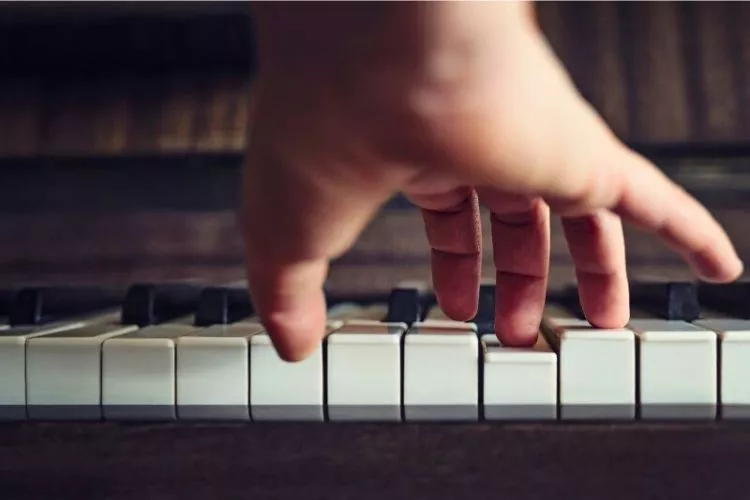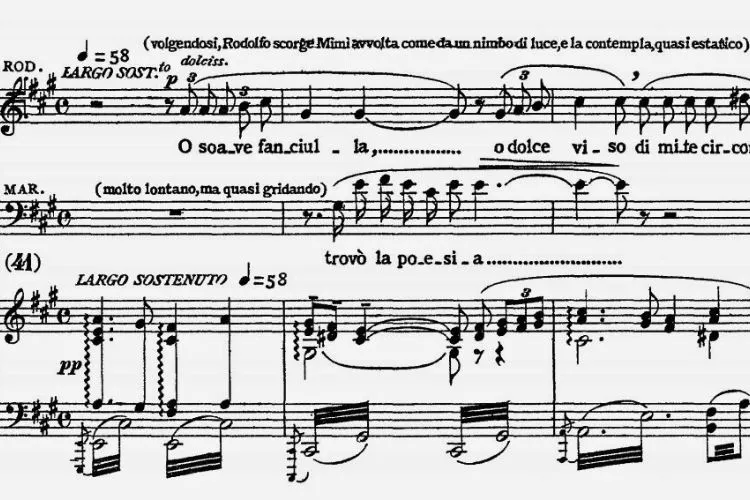Playing the piano is not just about hitting the right notes, but also about developing a solid technique that allows for precision, accuracy, and expressiveness.
Technique exercises form the foundation is important for building the necessary skills.
In this article, we will explore the top 10 exercises to improve piano technique that will help improve your piano technique and enhance your overall playing.

Contents
- 1 🎶Exercises to Improve Piano Technique
- 2 🎶Exercises to improve piano technique for beginners
- 3 🎶frequently asked question (FAQs)
🎶Exercises to Improve Piano Technique
1. Warm-up Exercises
Scales and Arpeggios
To begin any practice session, warming up with scales and arpeggios is vital. These exercises help in developing finger strength, coordination, and dexterity.
Start by practicing major and minor scales in different keys, moving smoothly with correct fingerings. Gradually increase the speed as you become more comfortable.
Additionally, include chromatic scales to improve finger agility and control. Practice arpeggios in various keys to strengthen chordal playing.
Octaves and Double Notes
Playing octaves and double notes is an excellent way to train hand coordination and strengthen fingers.
Begin by playing basic octave patterns up and down the keyboard, ensuring equal emphasis and control in both hands. Gradually increase the speed while maintaining accuracy.
Double note exercises, like playing scales in thirds or sixths, enhance hand independence and facilitate harmonic understanding.
2. Finger Independence Exercises
Hanon Exercises
The Hanon exercises are a time-tested method for developing finger independence and strength.
Start by practicing the first exercise, which involves playing a simple pattern using all five fingers of each hand.
Gradually increase the difficulty level by adding variations, such as playing the pattern in different octaves or with different finger combinations. Remember to focus on maintaining an even tone and rhythm.
Contrary Motion Exercises
Contrary motion exercises help improve finger control and independence by requiring each finger to move in a different direction. Begin with simple exercises that involve playing scales or arpeggios in contrary motion.
Focus on keeping both hands in sync and maintaining a relaxed posture. Gradually increase the complexity of the exercises to challenge your finger coordination.
3. Finger Stretching and Flexibility Exercises
Finger Extension Exercises
Stretching exercises are essential for improving finger extension and flexibility. Start with simple exercises such as stretching the fingers apart and then bringing them back together.
Use the help of a wall or tabletop to provide resistance for a more effective stretch. Over time, increase the difficulty by incorporating scales or arpeggios within the stretching exercises.
Finger Strengthening Exercises
Building finger strength is crucial for achieving dexterity and control. Practice exercises that target each finger individually, such as playing chromatic scales with each finger, emphasizing a strong and controlled sound. Incorporate techniques like staccato and legato playing to challenge your fingers further.
4. Hand and Wrist Technique Exercises
Hand Rotation Exercises
Hand rotation is a fundamental technique to master for smooth playing and fluid hand movement. Start by practicing exercises that involve rotating the hand while playing scales or arpeggios.
Focus on maintaining a relaxed wrist and forearm while allowing the hand to rotate naturally. Gradually increase the difficulty by incorporating larger intervals or playing in different keys.
Hand Independence Exercises
Hand independence exercises help train each hand to perform different movements simultaneously. Play exercises that involve crossing hands or playing contrasting rhythms using each hand.
This will strengthen the neural connections between your brain and hands, allowing for greater control and coordination.
5. Articulation and Velocity Building Exercises

Staccato and Legato Exercises
Playing with clarity and control is essential for expressing musical ideas. Practice staccato exercises by playing short and detached notes, focusing on precision and maintaining evenness between the hands.
Legato exercises involve playing smooth and connected notes, ensuring a seamless transition between each finger. Utilize a metronome to gradually increase the speed and enhance technical proficiency.
Velocity Building Exercises
Velocity exercises are designed to improve speed and agility. Practice scales, arpeggios, or technical passages at a comfortable speed, gradually increasing the tempo as you feel more comfortable.
Focus on maintaining accuracy and clarity even at higher speeds. Remember to start slow and gradually build up to avoid tension and injury.
6. Advanced Techniques: Double Notes and Tremolo
Double Note Exercises
Mastering double note playing adds depth and complexity to your piano technique. Start with exercises that focus on playing double-note scales, such as playing scales in thirds or sixths.
Pay close attention to hand position and maintaining a balanced tone between both hands. Gradually increase the difficulty level by incorporating larger intervals or more complex patterns.
Tremolo Exercises
Tremolo technique involves quickly alternating between two or more notes with the same finger.
Begin with simple tremolo exercises, playing two adjacent notes rapidly with a single finger, gradually increasing the speed. Focus on maintaining evenness and control in both hands, avoiding tension or strain.

Improving piano technique requires consistent practice and a strategic approach. The top 10 exercises discussed in this article provide a solid foundation for enhancing your playing skills. Remember to approach each exercise with patience and persistence.
Seek guidance from a qualified teacher or instructor to ensure proper form and technique. With dedication and practice, you will notice a significant improvement in your piano playing technique. Play on, and enjoy the journey of musical growth!
You may also find useful: How to Improve Finger Agility for Piano Playing? | How to Practice Sight Reading for Piano?
🎶Exercises to improve piano technique for beginners
For beginners learning to play the piano, developing a strong technique is key to laying a solid foundation for future progress.
Technique exercises help build finger strength, coordination, and dexterity, enabling beginners to play with greater precision and control.
In this article, we will explore essential exercises specifically designed for beginners to improve their piano technique and enhance their overall playing experience.

1. Finger Independence Exercises
Hanon Exercise
The first exercise in the renowned Hanon series is perfect for beginners. Start by placing your right hand on the middle C position and your left hand on the lower C position.
Play a simple pattern using all five fingers of each hand while focusing on an even tone and steady rhythm.
Finger Stretching Exercise
Stretching exercises are essential for developing finger flexibility. Begin by placing your hand flat on a table or desktop, fingers spread apart.
Gently stretch each finger away from the others, feeling a gradual stretch. Then, bring the fingers back together and repeat the process.
This exercise helps train your fingers to move independently and prepares them for more complex techniques.
2. Hand and Wrist Technique Exercises
Hand Rotation Exercise
Hand rotation exercises promote smooth and fluid hand movement. Begin by placing your right hand in a middle C position, and while playing a scale, slowly rotate your hand from left to right and back.
Focus on maintaining a relaxed wrist and forearm while allowing the hand to rotate naturally.
This exercise helps improve overall hand coordination and prepares beginners for more complex finger movements.
Hand Independence Exercise
Hand independence exercises are crucial for developing coordination between the left and right hand.
Start by playing a simple rhythm with your left hand using only the notes C, E, and G. Simultaneously, play a different rhythm with your right hand using the notes C, E, and G.
Gradually increase the complexity of the rhythms to challenge your hand independence. This exercise enhances neural connections between the brain and hands, leading to greater control and coordination.
3. Articulation and Velocity Building Exercises
Staccato and Legato Exercise
Articulation exercises focusing on staccato and legato playing are essential for mastering control and expressiveness.
Begin by playing a simple melody or scale, emphasizing short and detached notes (staccato).
Practice maintaining precision and evenness between both hands. Next, play the same melody or scale but focus on playing smooth and connected notes (legato).
The goal is to achieve a seamless transition between each finger. Utilize a metronome to gradually increase the speed and improve technical proficiency.
Simple Scale Exercise
Playing scales is an essential exercise for beginners. Start by practicing the C major scale using correct fingerings and focusing on evenness and control between both hands.
Gradually increase the speed while maintaining accuracy and precision. Scales help develop finger strength, coordination, and muscle memory, making them an integral part of any beginner’s piano technique practice.
Beginners embarking on their piano journey can benefit greatly from incorporating specific exercises into their practice routine. These exercises target finger independence, hand and wrist technique, as well as articulation and velocity building.
By dedicating time to these exercises regularly, beginners can improve their piano technique, setting the stage for continued growth and progress. Remember, patience and consistency are key.
Seek guidance from a qualified teacher to ensure proper form and technique. Embrace the joy of learning, and soon you will witness the fruits of your labor in your improved piano playing technique.
🎶frequently asked question (FAQs)
While 30 minutes of piano practice is a good start, it may not be sufficient for mastery. Consistent daily practice of at least 30 minutes is recommended for beginners, but as skills progress, more practice time is generally needed. To make the most of limited practice time, focus on targeted exercises, scales, and pieces. Quality practice, with a focus on technique, musicality, and problem areas, is more important than the quantity of time spent. Adjust practice duration based on individual progress and goals.
The 80/20 rule, also known as the Pareto Principle, can be applied to piano practice. It states that roughly 80% of the results come from 20% of the effort. In the context of piano practice, this means focusing on the most important and impactful aspects. Identify the key techniques or pieces that will yield the most significant improvement and allocate the majority of practice time to them. By prioritizing the essential elements, progress can be maximized in a shorter amount of time.
Mastering the piano in just 6 months is highly unlikely for most individuals. Mastery requires years of dedicated practice, consistent effort, and guidance from a qualified teacher. Progress varies depending on factors such as natural aptitude, practice consistency, and the complexity of repertoire. While significant improvement can be achieved in 6 months, setting realistic expectations is essential for long-term learning. Focus on enjoying the journey, setting incremental goals, and investing time and effort into consistent practice to continually grow as a pianist.
Conclusion:
Piano technique exercises can seem overwhelming and repetitive, but they are essential to becoming a skilled pianist. Incorporating these exercises into your practice routine can lead to improved finger independence, hand and wrist technique, and articulation and velocity building.
Practicing with a consistent routine and focus is key to progress. Remember to challenge yourself gradually, listen carefully to your playing, and seek guidance from a qualified teacher to ensure proper technique.
Developing a strong technique can take years of consistent effort, but with these essential exercises, beginners can build a strong foundation to reach their full potential as pianists.
